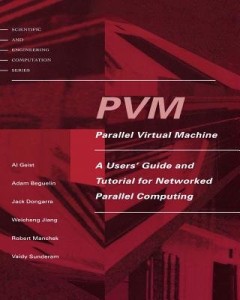Filter by

Of remixology :ethics and aesthetics after remix
A new theory of moral and aesthetic value for the age of remix, going beyond the usual debates over originality and appropriation. Remix--or the practice of recombining preexisting content--has proliferated across media both digital and analog. Fans celebrate it as a revolutionary new creative practice; critics characterize it as a lazy and cheap (and often illegal) recycling of other people's …
- Edition
- -
- ISBN/ISSN
- 9780262334976
- Collation
- 1 online resource (xxxi, 208 pages) :illustrations
- Series Title
- -
- Call Number
- -

The rationality quotient :toward a test of rational thinking
How to assess critical aspects of cognitive functioning that are not measured by IQ tests: rational thinking skills.OCLC-licensed vendor bibliographic record.
- Edition
- -
- ISBN/ISSN
- 9780262336819
- Collation
- 1 online resource (xvii, 459 pages) :illustrations
- Series Title
- -
- Call Number
- -

Winning the reputation game :Creating stakeholder value and competitive advan…
Subtitle on dust jacket cover: Creating stakeholder value and competitive advantage.Core strategies for creating a corporate reputation that will provide a competitive advantage in the marketplace: a back-to-basics approach.OCLC-licensed vendor bibliographic record.
- Edition
- -
- ISBN/ISSN
- 9780262335089
- Collation
- 1 online resource (xi, 261 pages) :illustrations
- Series Title
- -
- Call Number
- -

Thinking about oneself :from nonconceptual content to the concept of self
"In this book, Kristina Musholt offers a novel theory of self-consciousness, understood as the ability to think about oneself. Traditionally, self-consciousness has been central to many philosophical theories. More recently, it has become the focus of empirical investigation in psychology and neuroscience. Musholt draws both on philosophical considerations and on insights from the empirical sci…
- Edition
- -
- ISBN/ISSN
- 9780262329767
- Collation
- 1 online resource (xviii, 210 pages)
- Series Title
- -
- Call Number
- -

Rogue archives :digital cultural memory and media fandom
"The task of archiving was once entrusted only to museums, libraries, and other institutions that acted as repositories of culture in material form. But with the rise of digital networked media, a multitude of self-designated archivists -- fans, pirates, hackers -- have become practitioners of cultural preservation on the Internet. These nonprofessional archivists have democratized cultural mem…
- Edition
- -
- ISBN/ISSN
- 9780262336772
- Collation
- 1 online resource (x, 430 pages)
- Series Title
- -
- Call Number
- -

Soft circuits :crafting E-fashion with DIY electronics
Introducing students to the world of wearable technology.OCLC-licensed vendor bibliographic record.
- Edition
- -
- ISBN/ISSN
- 9780262320047
- Collation
- 1 online resource.
- Series Title
- -
- Call Number
- -

Project Icarus
Cara mencegah asteroid seberat empat miliar ton bertabrakan dengan bumi; sebuah fantasi teknologi oleh MIT Students System Project. Fantasi teknologi ini, produk dari MIT Students System Project dan inspirasi untuk film "Meteor" tahun 1979, menyajikan sebuah rencana untuk menghindari tabrakan hipotetis antara Bumi dan asteroid Apollo, Icarus, yang melintas setiap sembilan belas tahun dalam jara…
- Edition
- -
- ISBN/ISSN
- 9780262310987
- Collation
- 1 online resource
- Series Title
- Systems Engineering
- Call Number
- 629.41 PRO p

Practical Clinical Andrology
This open access book offers a valuable resource for understanding the correct pathways in the context of sexual disorders, couple reproduction, gender identity dysphoria, conditions for which patients commonly ask for consultation and treatment. Based on clinical evidence, international guidelines and experts experience, practical clinical management strategies are presented for each condition…
- Edition
- 1
- ISBN/ISSN
- 978-3-031-11701-5
- Collation
- -
- Series Title
- 6 b/w illustrations, 67 illustrations in colour
- Call Number
- XIII, 340

PVM (Parallel Virtual Machine); A Users' Guide and Tutorial for Network Paral…
Ditulis oleh tim yang mengembangkan perangkat lunak, tutorial ini adalah sumber definitif bagi para ilmuwan, insinyur, dan pengguna komputer lain yang ingin menggunakan Parallel Virtual Machine untuk meningkatkan fleksibilitas dan kekuatan sumber daya komputasi berkinerja tinggi mereka. Ditulis oleh tim yang mengembangkan perangkat lunak, tutorial ini adalah sumber definitif bagi para ilmuwan, …
- Edition
- -
- ISBN/ISSN
- 9780262287784
- Collation
- 1 online resource (xvii, 279 pages)
- Series Title
- Scientific and Engineering Computation
- Call Number
- 004.67 GEI p

The rational imagination; How People Create Alternatives to Reality
"Imajinasi manusia tetap menjadi salah satu wilayah pikiran yang belum dipetakan. Monograf yang mudah dipahami dan orisinal ini mengeksplorasi aspek utama imajinasi, penciptaan alternatif kontrafaktual terhadap realitas, dan mengklaim bahwa pemikiran imajinatif dipandu oleh prinsip yang sama yang mendasari pemikiran rasional. Penelitian telah menunjukkan bahwa pemikiran rasional lebih imajinati…
- Edition
- -
- ISBN/ISSN
- 9780262269629
- Collation
- 1 online resource (xiv, 254 pages) :
- Series Title
- -
- Call Number
- 153.35 BYR r
 Computer Science, Information & General Works
Computer Science, Information & General Works  Philosophy & Psychology
Philosophy & Psychology  Religion
Religion  Social Sciences
Social Sciences  Language
Language  Pure Science
Pure Science  Applied Sciences
Applied Sciences  Art & Recreation
Art & Recreation  Literature
Literature  History & Geography
History & Geography